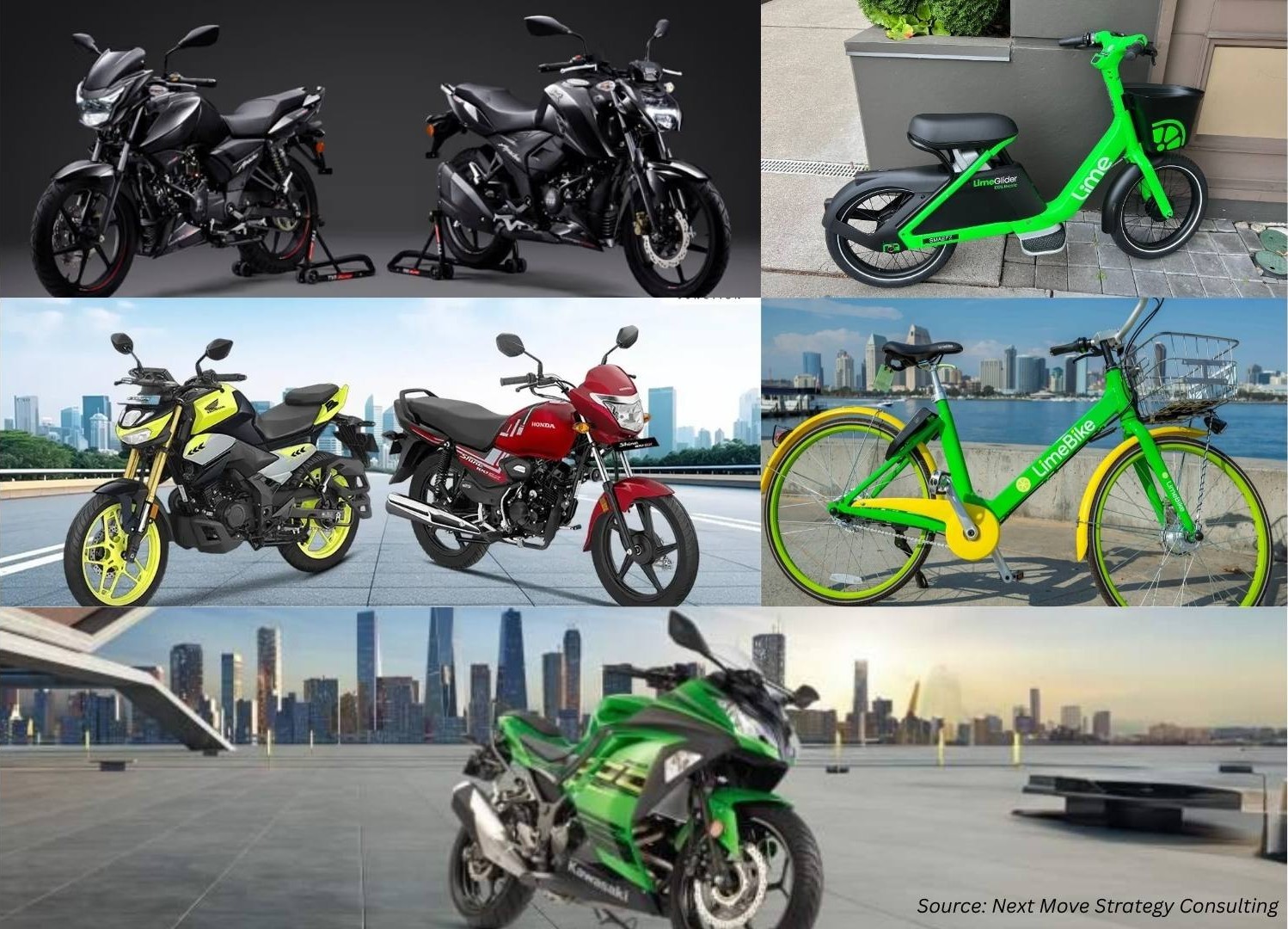
Consumer Automotive Financial Services Market by Service Type (Auto Loans, Leasing & Hire Purchase, Insurance Services, and Others), by Provider (Banks & Credit Unions, Captive Finance Companies, and Others), by Vehicle Type (Passenger Cars, Light Commercial Vehicles, and Others), by Distribution Channel (Dealerships, Online Platforms, and Others), and by End User (Individual Consumers, Corporate Fleet Operators and Others) – Global Opportunity Analysis and Forecast, 2024–2030
Industry Outlook
The global Consumer Automotive Financial Services Market size was valued at USD 1.68 trillion in 2024 and is estimated to reach USD 1.8 trillion in 2025 and is predicted to reach USD 2.6 trillion by 2030 with a CAGR of 7.66% from 2025-2030.
The consumer automotive financial services market is witnessing significant growth driven by the accelerating adoption of electric vehicles (EVs), the shift toward digital financing, and the expansion of ride-sharing and mobility services. Rising EV sales are fuelling demand for specialized auto loans, battery leasing, and tailored insurance products, while digital platforms and fintech innovations are enhancing accessibility, speed, and convenience for consumers.
Additionally, the growing vehicle fleets of SMEs and corporate operators present a major market opportunity, increasing demand for large-scale financing, leasing, and fleet-specific insurance solutions. However, high financing costs in certain regions continue to restrain market growth, despite rising vehicle demand globally.
Accelerating Adoption of Electric Vehicles (EVs) Drives the Market Growth
The accelerating adoption of electric vehicles (EVs) is a major driver of the consumer automotive financial services industry. As governments worldwide introduce stricter emission norms and extend subsidies or tax incentives, EV sales are rising sharply across both developed and emerging markets. This growth creates strong demand for specialized financing solutions such as battery leasing, EV-specific auto loans, and tailored insurance products. Financial institutions, automakers’ captive finance arms, and fintech lenders are increasingly innovating to meet the unique needs of EV buyers, making financing more accessible and flexible. The shift toward EVs is not only expanding the customer base for financial service providers but also reshaping the competitive landscape with new business models like subscription-based ownership.
Shift Toward Digital Financing Accelerates Market Demand
The rapid adoption of digital platforms is transforming the consumer automotive financial services market. Customers increasingly prefer online loan applications, instant approvals, and digital payment solutions over traditional in-branch processes. Fintech companies, along with banks and automakers’ captive finance arms, are investing in AI-driven credit scoring, e-KYC, and blockchain-based solutions to speed up loan disbursal and enhance transparency.
Mobile apps and online marketplaces now allow consumers to compare financing offers in real time, improving affordability and convenience. This digital shift is not only expanding access to financing in underserved regions but also reducing operational costs for providers, making the consumer automotive financial services market growth.
Growth of Ride-Sharing & Mobility Services Fuels Market Expansion
The rapid expansion of ride-sharing and mobility services is significantly boosting the demand for consumer automotive financial services. Companies operating fleets for services like Uber, Lyft, Ola, and Didi require large-scale vehicle financing, leasing, and insurance solutions to manage acquisitions and operations efficiently. This trend is also encouraging financial institutions and fintech lenders to design flexible credit products, subscription models, and fleet-specific insurance packages.
As urban mobility continues to grow globally, particularly in densely populated regions of Asia-Pacific and Latin America, fleet operators increasingly rely on structured financial services, making this segment the consumer automotive financial services market demand.
High Cost of Financing Limits the Market Growth
One of the primary restraints for the consumer automotive financial services market is the high cost of financing, particularly in regions with elevated interest rates. Rising vehicle prices, coupled with expensive auto loans or leasing options, limit affordability for individual consumers and small businesses. In emerging markets, where access to low-cost credit is restricted, this slow adoption of auto loans and other financial services.
Additionally, fluctuating interest rates and economic uncertainty reduce consumers’ willingness to take on debt, restraining market growth despite rising vehicle demand.
Rising Demand from SMEs and Corporate Fleet Operators Creates New Market Opportunity
The growing expansion of vehicle fleets by small and medium enterprises (SMEs) and corporate fleet operators presents a significant opportunity for the market. This trend is driving increased demand for large-scale financing solutions, leasing options, and fleet-specific insurance products. Financial service providers capitalize on this opportunity by offering tailored credit packages, flexible repayment plans, and value-added services such as maintenance financing. Targeting this segment not only increases market penetration but also provides long-term, recurring revenue streams.
Market Segmentation and Scope of Study
The consumer automotive financial services market report is segmented by service type, provider, vehicle type, distribution channel, end-user, and region. By service type, it includes auto loans, leasing & hire purchase, insurance services, maintenance & repair financing, and payment protection & credit services. Based on provider, the market covers banks & credit unions, captive finance companies (OEM-owned), NBFCs, fintech & digital lenders, and insurance companies. By vehicle type, it is divided into passenger cars, light commercial vehicles (LCVs), heavy commercial vehicles (HCVs), two-wheelers, and electric vehicles (EVs). By distribution channel, the market includes dealerships (at point of sale), online platforms, third-party agents/brokers, and direct-to-consumer channels (bank/insurance offices). End-users of consumer automotive financial services comprise individual consumers (retail buyers), corporate fleet operators, ride-sharing & mobility service providers, and SMEs (small & medium enterprises), with regional analysis conducted across North America, Europe, Asia-Pacific, Rest of the World (RoW).
Geographical Analysis
The growing adoption of electric vehicles (EVs) is a major driver of the consumer automotive financial services market share in North America. According to the IEA, the United States is projected to sell 1.6 million electric cars in 2025, reflecting strong consumer interest and supportive government policies, including tax credits and emission regulations. This surge in EV sales is increasing demand for specialized financing solutions such as EV-specific auto loans, battery leasing, and tailored insurance products. Financial institutions and automakers’ captive finance arms are innovating to provide flexible and accessible options, expanding the customer base and enabling new business models like subscription-based ownership.
The increasing adoption of digital financial platforms is driving growth in Europe’s market. Consumers are increasingly opting for online loan applications, instant approvals, and digital payment solutions instead of traditional in-branch processes. Banks, fintech companies, and automakers’ captive finance arms are investing in AI-driven credit scoring, e-KYC, and blockchain-based systems to enhance transparency and speed up loan disbursals. This shift toward digital financing not only improves convenience and affordability for consumers but also expands access in underbanked regions, making it a key growth driver for the European market.
The rapid expansion of ride-sharing and mobility services is a significant driver of the market in Asia-Pacific. Companies operating fleets for services like Ola, Didi, and Grab are increasingly relying on large-scale vehicle financing, leasing, and insurance solutions to manage acquisitions and operations efficiently. Financial institutions, fintech lenders, and automakers’ captive finance arms are developing flexible credit products and fleet-specific insurance packages to cater to this demand. With urbanization and rising vehicle adoption in countries such as India and China, structured financial services for fleets are becoming critical, driving market growth across the region.
The increasing expansion of small and medium enterprises (SMEs) and corporate fleet operators is a key driver of the market in the Rest of the World. Logistics, e-commerce, and mobility service providers are increasingly acquiring vehicles, creating strong demand for large-scale financing, leasing, and fleet-specific insurance solutions. Financial institutions, fintech companies, and automakers’ captive finance arms are developing tailored credit products and flexible repayment plans to serve this growing segment. This trend not only expands access to structured automotive financial services but also creates long-term revenue opportunities for market participants across Latin America, the Middle East, and Africa.
Strategic Innovations Adopted by Key Players
Key players in the consumer automotive financial services industry are driving growth through record vehicle sales, regulatory compliance initiatives, and strategic partnerships.
-
In August 2025, GM achieved a record monthly sale of over 21,000 electric vehicles in the U.S., driven by consumers purchasing before the expiration of federal EV tax credits.
-
In January 2025, the U.S. Consumer Financial Protection Bureau ordered American Honda Finance to pay USD 12.8 million for reporting inaccuracies that negatively impacted the credit reports of 300,000 Honda and Acura vehicle drivers.
-
In September 2024, VWFS U.S. and Wells Fargo announced a cooperation agreement to provide vehicle purchase financing for Volkswagen, Audi, and Ducati brands in the United States. This partnership aims to enhance financing options for customers and strengthen VWFS's presence in the U.S. market.
Key Benefits
-
The report provides quantitative analysis and estimations of the industry from 2024 to 2030, which assists in identifying the prevailing consumer automotive financial services market opportunities.
-
The study comprises a deep-dive analysis of the current and future consumer automotive financial services market trends to depict prevalent investment pockets in the sector.
-
Information related to key drivers, restraints, and opportunities and their impact on the consumer automotive financial services market is provided in the report.
-
Competitive analysis of the players, along with their market share is provided in the report.
-
SWOT analysis and Porters Five Forces model is elaborated in the study.
-
Value chain analysis in the market study provides a clear picture of roles of stakeholders.
Consumer Automotive Financial Services Market Key Segments
By Service Type
-
Auto Loans
-
Leasing & Hire Purchase
-
Insurance Services
-
Maintenance & Repair Financing
-
Payment Protection & Credit Services
By Provider
-
Banks & Credit Unions
-
Captive Finance Companies (OEM-owned)
-
NBFCs
-
Fintech & Digital Lenders
-
Insurance Companies
By Vehicle Type
-
Passenger Cars
-
Light Commercial Vehicles (LCVs)
-
Heavy Commercial Vehicles (HCVs)
-
Two-Wheelers
-
Electric Vehicles (EVs)
By Distribution Channel
-
Dealerships (at Point of Sale)
-
Online Platforms
-
Third-Party Agents/Brokers
-
Direct-to-Consumer (Bank/Insurance Offices)
By End User
-
Individual Consumers (Retail Buyers)
-
Corporate Fleet Operators
-
Ride-Sharing & Mobility Service Providers
-
SMEs (Small & Medium Enterprises)
By Region
-
North America
-
The U.S.
-
Canada
-
Mexico
-
-
Europe
-
The UK
-
Germany
-
France
-
Italy
-
Spain
-
Denmark
-
Netherlands
-
Finland
-
Sweden
-
Norway
-
Russia
-
Rest of Europe
-
-
Asia-Pacific
-
China
-
Japan
-
India
-
South Korea
-
Australia
-
Indonesia
-
Singapore
-
Taiwan
-
Thailand
-
Rest of Asia-Pacific
-
-
RoW
-
Latin America
-
Middle East
-
Africa
-
Key Players
-
Volkswagen Financial Services AG
-
Ford Motor Credit Company LLC
-
General Motors Financial Company, Inc.
-
BMW Bank GmbH / BMW Group Financial Services*
-
Stellantis Financial Services S.A.
-
Nissan Financial Services Co., Ltd.
-
American Honda Finance Corporation
-
Mobilize Financial Services
-
Santander Consumer Finance, S.A.
-
Ally Financial Inc.
-
Crédit Agricole Auto Bank S.p.A.
-
BNP Paribas Personal Finance S.A.
-
Hyundai Capital Services, Inc.
Report Scope and Segmentation
|
Parameters |
Details |
|
Market Size in 2025 |
USD 1.8 Trillion |
|
Revenue Forecast in 2030 |
USD 2.6 Trillion |
|
Growth Rate |
CAGR of 7.66% from 2024 to 2030 |
|
Analysis Period |
2024–2030 |
|
Base Year Considered |
2024 |
|
Forecast Period |
2025–2030 |
|
Market Size Estimation |
Billion (USD) |
|
Growth Factors |
|
|
Countries Covered |
28 |
|
Companies Profiled |
10 |
|
Market Share |
Available for 10 companies |
|
Customization Scope |
Free customization (equivalent to up to 80 working hours of analysts) after purchase. Addition or alteration to country, regional, and segment scope. |
|
Pricing and Purchase Options |
Avail customized purchase options to meet your exact research needs. |

















 Speak to Our Analyst
Speak to Our Analyst

























